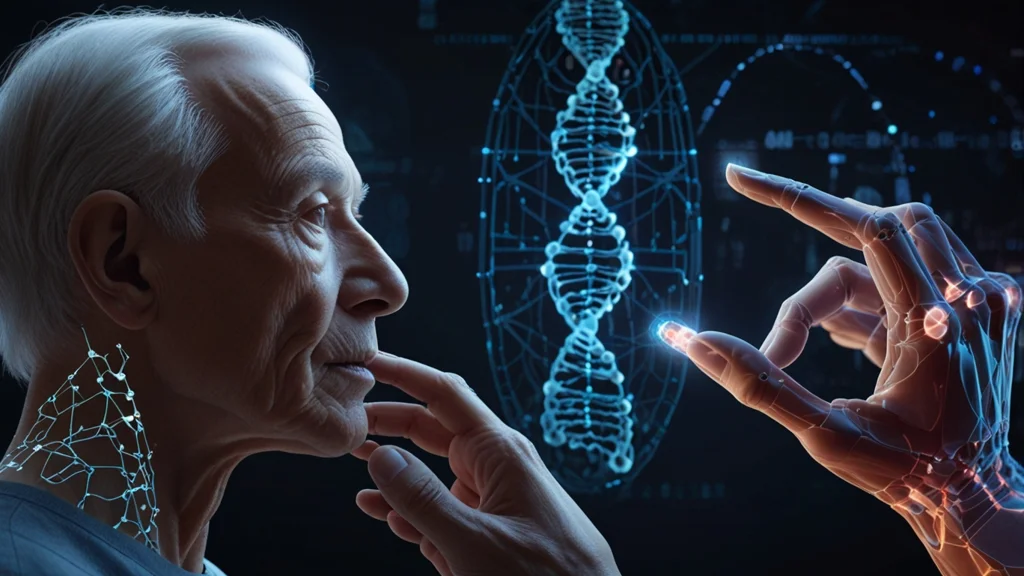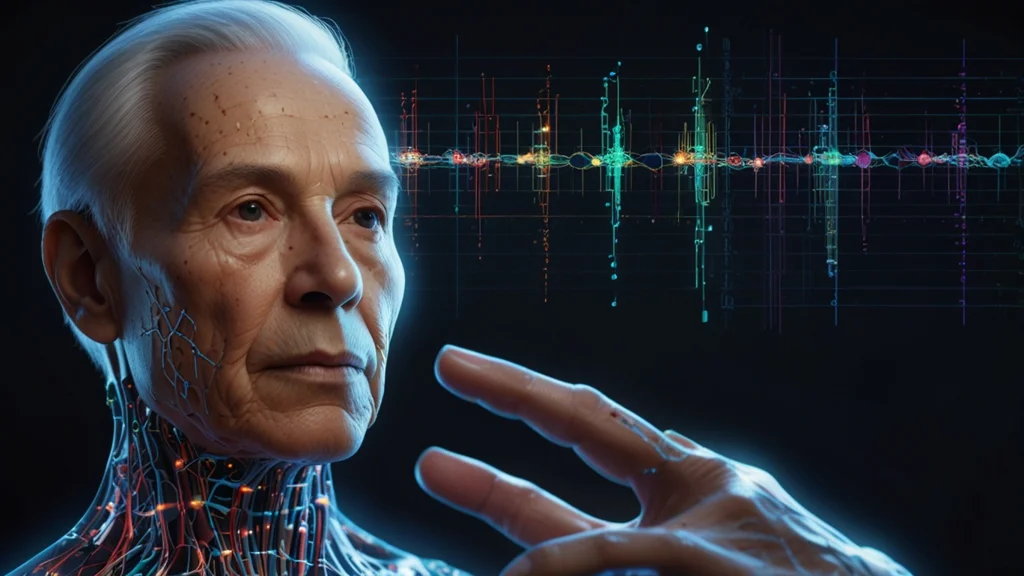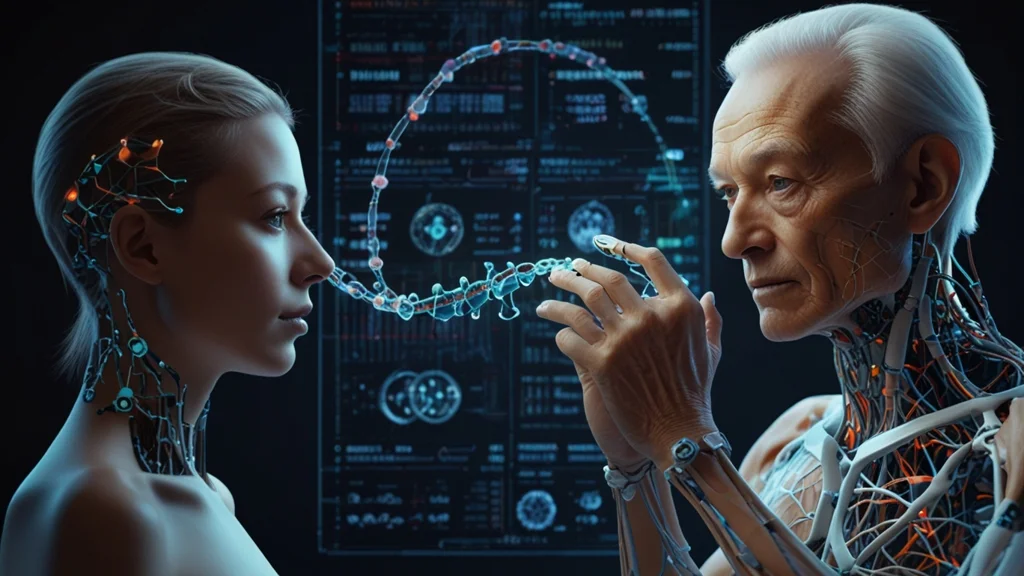In 2006, Dr. Shinya Yamanaka had the great discovery of identifying four crucial proteins that were called Yamanaka factors-OCT4, SOX2, KLF4, and c-MYC. They were discovered to change an adult cell into a stem cell; a cell was considered re-wired so it can develop any form of the cell within the body. Researchers have indicated this would potentially rejuvenate the repair of tissues with aging slowed.
However, this process has major challenges. It is slow, inefficient, and difficult to control. That’s where Artificial intelligence comes in. AI is helping scientists improve the use of Yamanaka factors, making cell reprogramming faster and more effective.
What Are Yamanaka Factors?
Yamanaka factors are proteins that can transform ordinary adult cells into stem cells. These stem cells are called induced pluripotent stem cells (iPSCs). They can turn into almost any cell in the body, such as:
- Heart cells – for repairing damaged heart tissue
- Nerve cells – for treating brain diseases like Parkinson’s
- Liver cells – for regenerating damaged liver tissue
- Muscle cells – for treating muscle-related diseases
This discovery created hope for regenerative medicine. But it had a big limitation—low efficiency. Converting cells took too long, and many cells failed to transform.
Read more : Qwen2.5: A Powerful AI Model by Alibaba

How AI Is Improving This Process
AI is transforming stem cell research in many ways. It can analyze massive amounts of data, predict outcomes, and find better methods for cell reprogramming. Scientists are now using AI to:
1. Increase Reprogramming Efficiency
AI can help identify the best ways to use Yamanaka factors. It finds the perfect conditions for turning cells into iPSCs. This reduces the time and effort needed to reprogram cells.
2. Reduce Errors and Improve Safety
The reprogramming process can sometimes lead to harmful mutations. AI can analyze cell changes in real time. It spots errors and helps researchers adjust the process before problems occur.
3. Speed Up Drug Testing and Disease Research
Scientists use AI to test drugs on lab-grown cells. AI predicts how different drugs will affect cells before testing them on humans. This speeds up medical research and helps find new treatments faster.
4. Personalized Medicine
Every person is different. AI can study a patient’s cells and recommend customized treatments. This could lead to personalized anti-aging therapies in the future.
Read more : AI Agent: A Step-by-Step Guide to Building an Empowering System

A Major Breakthrough: AI-Designed Yamanaka Factors
Recent reports suggest that AI has successfully redesigned Yamanaka factors to work much faster and more efficiently. Scientists have been trying to improve this process for years, but AI has now accelerated progress dramatically.
What Did AI Do Differently?
Traditional Yamanaka factors were discovered through trial and error. AI, on the other hand, analyzed millions of data points to find a better combination. The results were astonishing:
- 50x faster reprogramming: AI-modified Yamanaka factors reprogram cells much faster than the original method.
- Greater efficiency: More cells successfully transform into stem cells, reducing waste.
- Lower risk of mutations: AI-designed factors work more precisely, making the process safer.
Why Is This Important?
If cell reprogramming becomes faster and safer, scientists can begin testing it on real medical treatments. This could lead to breakthroughs in:
- Regenerative medicine: Repairing damaged tissues and organs much more effectively.
- Anti-aging therapies: Slowing or even reversing aging at the cellular level.
- Disease treatment: Reprogramming diseased cells into healthy ones for conditions like heart disease, diabetes, and neurological disorders.
This AI-driven breakthrough could push anti-aging research forward by decades. However, challenges still remain before it can be used in humans.
How Close Are We to Reversing Aging?
The idea of reversing aging sounds like science fiction. But with AI and stem cell research advancing rapidly, scientists are making real progress. The big question is: how close are we?
What We Can Do Now
Right now, scientists can already use stem cell therapy to treat some diseases. These include:
- Skin regeneration: Stem cells help heal wounds and burns.
- Blood disorders: iPSC-based therapies are being tested for leukemia and sickle cell disease.
- Eye diseases: Stem cells have restored vision in patients with certain types of blindness.
These treatments prove that reprogrammed cells can work safely in the human body. However, full-body rejuvenation is still far away.
Read more : Chinese AI: DeepSeek and the Future of AI Innovation

Biggest Challenges to Reversing Aging
Despite recent progress, there are still major hurdles to overcome:
1. Safety Concerns
Reprogramming cells can sometimes lead to uncontrolled growth, increasing the risk of cancer. Scientists must ensure AI-modified Yamanaka factors do not trigger harmful side effects.
2. Long-Term Effects
Even if reprogrammed cells look young, scientists need to confirm they stay healthy over time. More studies are needed to test whether these cells function properly for decades.
3. Ethical and Regulatory Issues
Using AI and stem cells to reverse aging raises ethical questions. Governments and medical organizations need to create guidelines to ensure these technologies are used responsibly.
4. Human Testing
So far, most experiments have been done on animals or in lab settings. Human trials are the next big step, but they require strict safety regulations.
The Future of AI and Aging
AI is pushing the boundaries of medical science. It is helping researchers unlock the secrets of aging faster than ever before. If AI can refine cell reprogramming, we may see:
- Advanced regenerative medicine: Treating injuries and diseases with lab-grown tissues.
- Personalized anti-aging therapies: Slowing aging based on a person’s unique biology.
- Longer, healthier lives: Using AI-designed Yamanaka factors to rejuvenate aging cells safely.
Many experts believe that within the next decade, AI-powered stem cell treatments will become common. Whether full-body rejuvenation is possible remains uncertain, but progress is happening fast.
The big question is not if we can slow aging—but when we will succeed. AI may be the key to unlocking a future where people live longer, healthier lives.




